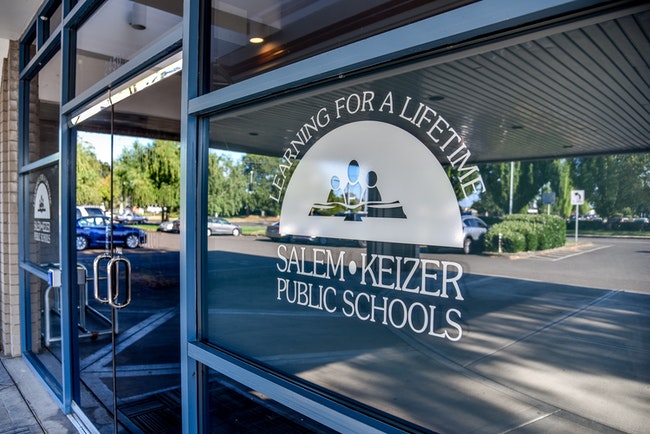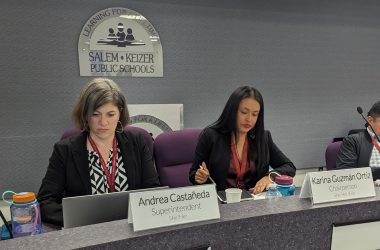
Fewer Salem elementary school students are on track to read proficiently by third grade than one year ago, according to data shared with the Salem-Keizer School Board last week. The same data also show particular difficulties for special education students and those learning English, including native Spanish speakers assessed in Spanish.
District administrators presented the data, which measures second graders’ ability to read a passage of text. It’s one of the data points district administrators track and report annually to the school board, and provides a glimpse at the challenges the district’s youngest students face as they return to in-person classes on Tuesday
Educators said the data point is a key indicator for students being able to read and understand schoolwork moving forward and success in other subjects.
“If kids are struggling at that point, it’s going to be really difficult for them to transition into higher level demands,” said Suzanne West, the district’s director of elementary curriculum and instruction, in an interview with Salem Reporter.
The share of second graders deemed “high risk” for reading passages was 26% of 2,295 tested this winter, up from about 22% one year ago.
That designation means the student scored in the 10th percentile or below compared to a national standard.
“That’s like having a temperature of 103,” West said. “That tells us that there’s something that we really need to dig into there because this student is not demonstrating the basic level of skill needed to be a proficient reader.”
For some groups of students, the gap widened far more over the past year. District administrators say those growing gaps are a key concern as they assess how students have fared following nearly a year of school online.
(Graphic by Rachel Alexander/Salem Reporter)
Among second graders receiving special education services, 54% were considered high risk this year compared to 43% one year ago.
Native Spanish speakers are assessed in both English and Spanish. In Spanish, the group jumped from 12% at high risk last year to 45% this year.
The share of high-risk students fell compared to last year for Native American and Asian students but rose for every other racial or ethnic group the district tracks. Black and Pacific Islander students saw the largest increases in the share of high-risk second graders.
Teachers typically test students three times per year and use the results to identify students in need of extra help and pinpoint the tasks they struggle most with. Educators said this year’s numbers are likely less reliable than usual because students were tested online, sometimes with parents or older siblings helping them.
That means assessing where kids are and developing a plan to bring them up to speed will be an early task for teachers meeting their students in-person for the first time in the coming weeks.
Kraig Sproles, assistant superintendent, told the school board there are bright spots in the data, indicating that kids are learning despite the challenges of online school The share of high-risk students has fallen between fall and winter tests this school year, even though the tests become more difficult as the year progresses.
“Our teachers have worked Herculean tasks to be able to move the dial for our families,” Sproles told the school board.
In an interview with Salem Reporter, Sproles said the gains from fall to winter reflect improvements in online school as educators, students and families have become more familiar with the technology.
“When we started this we saw some really dramatic drop-offs,” Sproles said. “We’ve gotten much better at delivering instruction and doing small group interventions.”
Most kindergarten and first grade students will begin in-person classes two days per week Tuesday, with second and third graders following next week.
Though the in-person school day is shorter (just five hours) Sproles said the district is keeping instructional time in reading the same (90 minutes per day) in an effort to close gaps.
Contact reporter Rachel Alexander: [email protected] or 503-575-1241.
Salem Reporter counts on community support to fund vital local journalism. You can help us do more.
SUBSCRIBE: A monthly digital subscription starts at $5 a month.
GIFT: Give someone you know a subscription.
ONE-TIME PAYMENT: Contribute, knowing your support goes towards more local journalism you can trust.

Rachel Alexander is Salem Reporter’s managing editor. She joined Salem Reporter when it was founded in 2018 and covers city news, education, nonprofits and a little bit of everything else. She’s been a journalist in Oregon and Washington for a decade. Outside of work, she’s a skater and board member with Salem’s Cherry City Roller Derby and can often be found with her nose buried in a book.









